Sorry if that title isn't very descriptive. Anyway, I am working on something dealing with randomly generating landscapes. I made lakes, but due to how they are make, they often cause straight edges / dropoffs, which aren't desirable. I am trying to smooth it (right after making the lake, if possible), by defining a max variation amount (so land heights cannot vary more than it), and have it fix land if it varies to much, and quit if it is fine.
The problem:

My attempted fix:

As you can see... it didn't work. It also occurs to me, I think it would be broken if it had to move down, although that case shouldn't actually occur, because lakes only ever sink the landscape. Anyway, here is the source of my attempt:
//smoothing land nearby
int maxVariation = 2; //similar to the max height variation when the land is generated
//going right
for (int xPos = rightBound + 1, previousHeight = 0; ; ++xPos)
{
if (previousHeight == 0)
for (; previousHeight < size.y; ++previousHeight)
if (grid[0][rightBound][previousHeight] != BlockColor::DIRT && grid[0][rightBound][previousHeight] != BlockColor::GRASS)
{
--previousHeight;
break;
}
for (int y = 0; y < size.y; ++y)
if (grid[0][xPos][y] == BlockColor::WATER)
goto done_smoothing_right;
int height;
for (height = 0; height < size.y; ++height)
if (grid[0][xPos][height] != BlockColor::DIRT && grid[0][xPos][height] != BlockColor::GRASS)
{
--height;
break;
}
int difference = std::abs(height - previousHeight);
previousHeight = height;
if (difference > maxVariation)
{
for (int j = 0; j < size.y; ++j)
{
int toMove = difference;
while (j + toMove >= size.y)
--toMove;
grid[0][xPos][j] = grid[0][xPos][j + toMove];
}
}
else
goto done_smoothing_right;
}
done_smoothing_right:
int tomakegotowork;
Note that is only the right side, but left should be about the same. How can I do this correctly?
Thanks if you can help.
EDIT:
I never did solve this problem. Instead, I made a recursive function to measure air, (from a certain height), and if a pocket of air (formed by the land) had enough, to fill with water. This has the advantaged of the land looking smooth because it is not altered.